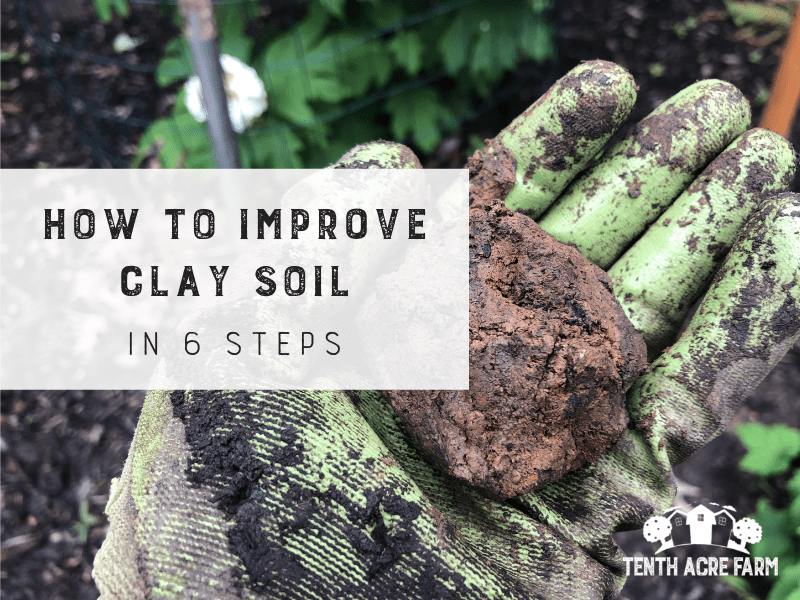If you’ve ever tried gardening in clay soil, you know the struggle. The heavy, sticky texture can make it difficult for plants to thrive. But fear not, because with the right techniques, you can successfully conquer clay soil. One tip is to aerate the soil and add organic matter, such as compost, to improve its structure. Another option is to use raised garden beds or mound plants to avoid direct contact with the clay soil. Choosing plants adapted to clay soil or with deep root systems can also promote better growth. And don’t forget to test the soil pH before adding a liming agent like calcium or gypsum. By implementing these tips and tricks, you can transform your clay soil into a flourishing garden.
Aerate the soil
Clay soil can be heavy and compacted, making it difficult for plants to thrive. One effective way to improve clay soil is by aerating it. Aeration is the process of creating channels or holes in the soil to allow air, water, and nutrients to penetrate the root zone. This can be done through mechanical aeration or natural aeration.
Mechanical aeration
Mechanical aeration involves the use of tools or machinery to physically break up the soil and create air pockets. One common method of mechanical aeration is to use a garden fork or a core aerator. These tools create holes in the soil, allowing for better air circulation and root development. It is important to aerate the soil when it is moist, as it will be easier to penetrate the soil.
Natural aeration
Natural aeration is another method of improving clay soil. It involves encouraging natural processes, such as earthworm activity, to create channels in the soil. Earthworms naturally burrow through the soil, creating tunnels that allow for better air and water movement. By encouraging earthworms and other soil organisms, you can improve the structure of the clay soil over time.
Benefits of soil aeration
Aerating the soil has several benefits for clay soil. It improves drainage and prevents waterlogging, as the channels created by aeration allow excess water to drain away. This helps prevent root rot and other diseases caused by waterlogged soil. Aeration also improves root development, as roots can more easily penetrate the soil and access nutrients. Additionally, it enhances soil fertility by facilitating the decomposition of organic matter and the release of nutrients. Overall, soil aeration is a crucial step in improving clay soil for successful gardening.
Add organic matter
One of the most effective ways to improve clay soil is by adding organic matter. Organic matter helps to lighten the soil, improve its structure, and increase its water-holding capacity. There are different types of organic matter that can be used, and various methods to incorporate it into the soil.
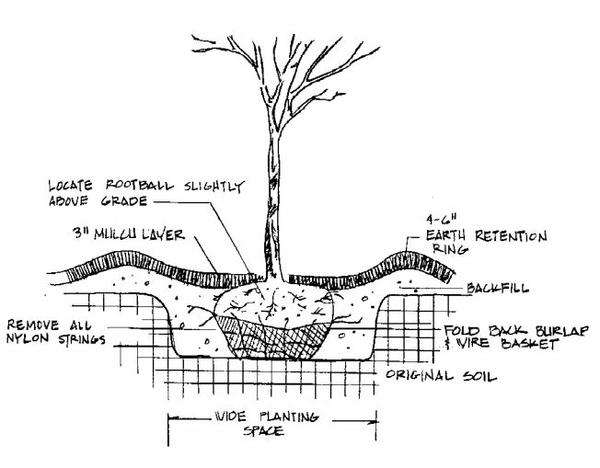
Types of organic matter
There are several types of organic matter that can be added to clay soil. These include compost, well-rotted manure, leaf mold, and peat moss. Compost is a rich source of nutrients and improves soil structure. Well-rotted manure is also nutrient-rich and adds humus to the soil. Leaf mold is created from decomposed leaves and helps to increase soil aeration and water retention. Peat moss is a lightweight organic material that improves soil structure and water-holding capacity.
Methods of adding organic matter
There are different methods to add organic matter to clay soil. One common method is to incorporate it into the soil before planting. This can be done by spreading a layer of organic matter on the soil surface and then tilling or digging it in. Another method is to use organic matter as a mulch. This involves spreading a layer of organic matter on the soil surface around established plants. As the organic matter breaks down, it enriches the soil and improves its structure.
Benefits of organic matter
Adding organic matter to clay soil has several benefits. It improves soil structure, making it easier for plant roots to penetrate and grow. Organic matter also increases the soil’s water-holding capacity, reducing the risk of drought stress for plants. Additionally, it enhances nutrient availability by providing a food source for beneficial soil microorganisms. Organic matter also improves soil aeration, allowing roots to access oxygen more easily. Overall, adding organic matter is an essential step in improving clay soil and creating a healthy growing environment for plants.
Use organic mulches
Another technique to improve clay soil is by using organic mulches. Organic mulches not only help to conserve moisture and control weeds but also have a positive impact on soil structure and fertility.

Types of organic mulches
There are various types of organic mulches that can be used on clay soil. Grass clippings, straw, leaves, wood chips, and compost are all excellent organic mulch options. Grass clippings and leaves can be easily obtained from your own yard, making them a convenient and sustainable choice. Wood chips and straw are readily available and provide effective weed control. Compost, in addition to being a mulch, also adds nutrients to the soil.
Application of organic mulches
Applying organic mulches is a simple process. Start by clearing the area of any weeds or debris. Spread a layer of organic mulch around your plants, ensuring a thickness of around 2 to 4 inches. Be careful to avoid piling the mulch directly against the plant stems, as this can lead to rot or disease. Organic mulches should be replenished periodically to maintain their effectiveness.
Benefits of organic mulches
Using organic mulches has several benefits for clay soil. Firstly, it helps to conserve moisture by reducing evaporation from the soil surface. This is especially important in clay soil, which can become compacted and prone to waterlogging. Organic mulches also help to regulate soil temperature, keeping it cooler in the summer and warmer in the winter. Additionally, organic mulches suppress weed growth, reducing competition for nutrients and moisture. As the mulch breaks down, it adds organic matter to the soil, improving its structure and fertility. Overall, organic mulches are a valuable tool in creating a healthy growing environment for plants in clay soil.
Consider raised garden beds
Raised garden beds are an excellent option for gardening in clay soil as they provide several advantages over traditional in-ground gardening.
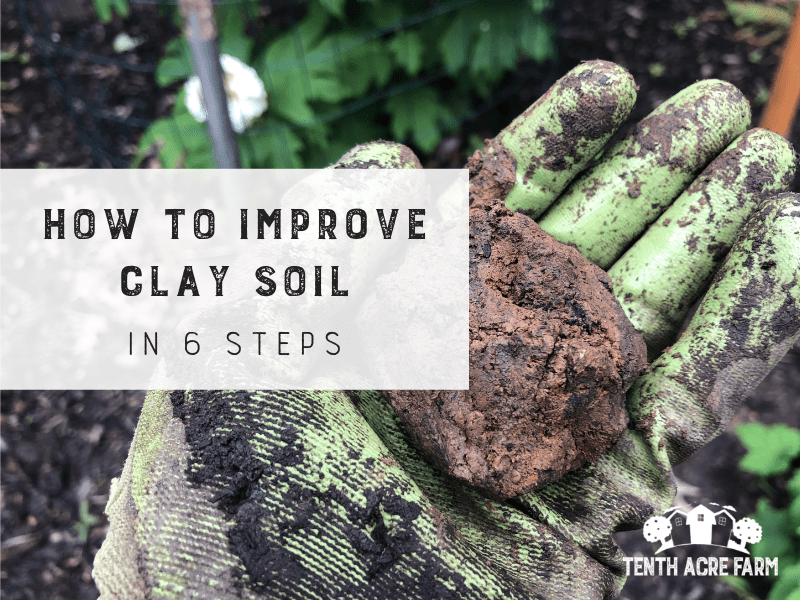
Advantages of raised garden beds
One of the main advantages of raised garden beds is improved soil drainage. The raised design allows excess water to drain away more easily, preventing the waterlogged conditions that can occur in clay soil. Raised garden beds also provide better soil aeration and root development. The loose, well-draining soil mix used in raised beds allows plant roots to grow more freely and access nutrients. Another advantage is that raised beds can be built at a height that is comfortable for gardening, reducing strain on your back and knees.
Construction of raised garden beds
Raised garden beds can be constructed from a variety of materials, such as wood, stone, or brick. Choose a material that is durable and will withstand the elements. The size and shape of the raised bed can vary depending on your needs and available space. It is important to prepare the ground beneath the raised bed by removing any existing vegetation and loosening the soil. This will help to prevent weeds and allow for proper drainage.
Planting in raised garden beds
When planting in raised garden beds, it is important to use a high-quality soil mix that is well-draining and nutrient-rich. You can create your own soil mix by combining equal parts of compost, topsoil, and perlite or vermiculite. This will provide an ideal growing environment for plants in clay soil. When planting, follow the spacing and planting instructions for each specific plant. It is also important to water the raised bed regularly, as the soil in raised beds can dry out more quickly than in-ground soil.
Mound plants
Mounding plants is another technique that can be used to improve clay soil. By raising the planting area, you can create a well-drained mound that allows for better root development and prevents waterlogging.
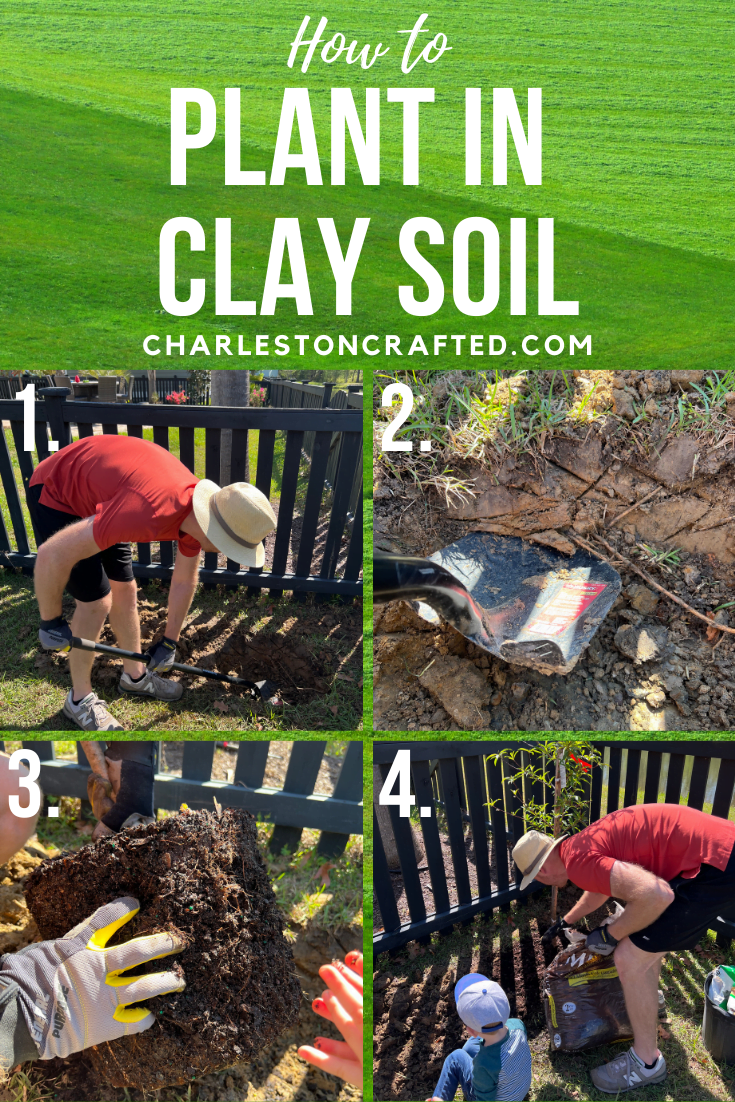
Benefits of mounding plants
Mounding plants provides several benefits for clay soil. Firstly, it improves soil drainage by elevating the roots above the compacted clay. This helps to prevent waterlogging and allows excess moisture to drain away more easily. Mounding also promotes better root development, as roots are able to penetrate loose, well-draining soil more easily. Additionally, mounding helps to create a more hospitable environment for beneficial soil organisms, such as earthworms.
How to mound plants
To mound plants, start by preparing the planting area. Clear away any existing vegetation or debris. Then, use a garden fork or shovel to loosen the soil in the planting area. Create a mound of well-draining soil mix, such as a combination of compost, topsoil, and perlite or vermiculite. The mound should be approximately 6 to 8 inches high and wide, with a flat or slightly concave top. Plant your chosen plants on top of the mound, ensuring that the roots are covered with soil.
Suitable plants for mounding
Mounding is an effective technique for a variety of plants, especially those that prefer well-drained soil. Perennials such as lavender, coneflowers, and daylilies can thrive in mounded soil. Additionally, herbs like rosemary, thyme, and sage are well-suited to mounding. Vegetables such as tomatoes, peppers, and squash can also benefit from mounding, as it provides better drainage and helps prevent soil-borne diseases. When choosing plants for mounding, consider their specific requirements and ensure they are suitable for your climate.
Use liming agents
Using liming agents can be an effective way to improve clay soil, especially if the pH of the soil is too low. Liming agents, such as calcium or gypsum, help to neutralize acidic soil and improve its fertility.
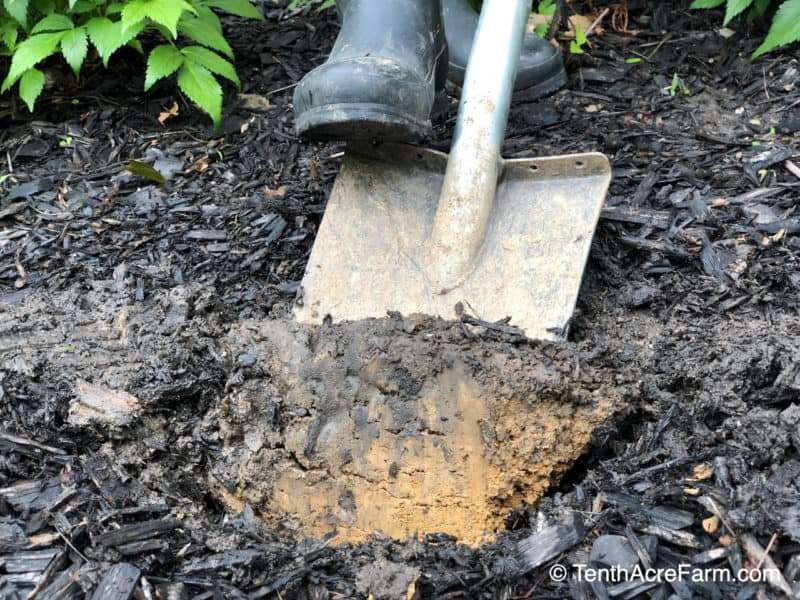
Types of liming agents
There are different types of liming agents that can be used to improve clay soil. The most common ones are calcium carbonate (lime) and gypsum. Calcium carbonate helps to raise the pH of acidic soil and provides a source of calcium for plant growth. Gypsum, on the other hand, does not affect soil pH but improves soil structure and drainage. It also provides a source of calcium and sulfur for plants.
Testing soil pH
Before applying any liming agents, it is crucial to test the pH of your soil. This can be done using a soil test kit or by sending a sample to a local agricultural extension office. The ideal pH range for most plants is between 6 and 7. If the pH is below this range and the soil is acidic, then liming agents can be used to raise the pH and make the soil more alkaline.
Application of liming agents
The application of liming agents depends on the specific type of agent being used and the pH requirements of the plants. For calcium carbonate (lime), it is generally recommended to apply it in the fall or early spring. The exact amount of lime needed will depend on the pH of the soil and the type of plants being grown. Gypsum can be applied at any time of the year and does not require specific pH adjustments. It can be spread over the soil surface and raked in, or it can be watered into the soil.
Choose suitable plants
Choosing suitable plants for clay soil is essential to ensure their success and healthy growth. Some plants are naturally more adapted to clay soil, while others have deep or shallow root systems that can better penetrate and access nutrients in clay soil.
Plants adapted to clay soil
Some plants have naturally adapted to clay soil conditions and can thrive in this type of soil. These include shrubs like Forsythia, Spirea, and Lilac, which have robust root systems that can penetrate clay soil. Perennials like Black-eyed Susan, Russian Sage, and Coneflowers can also do well in clay soil. When selecting plants for clay soil, it is important to consider their specific requirements and ensure they are suitable for your climate.
Plants with deep root systems
Plants with deep root systems are well-suited to clay soil, as their roots can penetrate the compacted soil and access nutrients. Trees like Oak, Maple, and Pine have deep root systems that can thrive in clay soil. Additionally, perennial grasses like Switchgrass and Little Bluestem have deep fibrous roots that help to break up and improve clay soil. When planting trees or deep-rooted plants in clay soil, it is important to ensure they have enough space to spread their roots.
Plants with shallow roots
While deep-rooted plants are ideal for clay soil, there are still several plants with shallow root systems that can thrive in these conditions. Groundcovers like Creeping Thyme, Creeping Jenny, and Ajuga are excellent choices for clay soil. These plants help to stabilize the soil and prevent erosion. Additionally, many annual flowers like Marigolds, Zinnias, and Petunias can do well in clay soil, as long as they receive adequate water and nutrients. When planting shallow-rooted plants in clay soil, it is important to provide regular watering and ensure the soil is well-draining.
Utilize organic mulches
Organic mulches are not only beneficial for weed control and moisture retention, but they also have positive effects on soil structure and fertility. Using organic mulches in clay soil is a valuable technique to improve its overall health and growing conditions.
Benefits of organic mulches
The use of organic mulches in clay soil offers several benefits. Firstly, organic mulches help to conserve moisture by reducing evaporation from the soil surface. This is particularly important in clay soil, which can become compacted and prone to waterlogging. By retaining moisture, organic mulches ensure that plants have a constant water supply, reducing the risk of drought stress. Additionally, organic mulches regulate soil temperature, keeping it cooler in the summer and warmer in the winter. This provides a more favorable environment for plant growth.
Types of organic mulches
There are various types of organic mulches that can be used in clay soil. Grass clippings, straw, leaves, wood chips, and compost are all excellent options. Grass clippings and leaves can be easily obtained from your own yard, making them a convenient and sustainable choice. Wood chips and straw provide effective weed control and can be purchased in bulk. Compost, in addition to its nutrient-rich properties, also improves soil structure and fertility when used as a mulch.
Application of organic mulches
Applying organic mulches in clay soil is a straightforward process. Start by clearing the area of any weeds or debris. Spread a layer of organic mulch around your plants, ensuring a thickness of around 2 to 4 inches. It is important to avoid piling the mulch directly against the plant stems, as this can lead to rot or disease. Leave a small space around the stems to allow for air circulation. Periodically replenish the mulch to maintain its effectiveness.
Consider raised garden beds
Raised garden beds are a practical and effective solution for gardening in clay soil. They offer several advantages over traditional in-ground gardening and can greatly improve the growing conditions for plants.
Advantages of raised garden beds
One of the main advantages of raised garden beds is improved soil drainage. The raised design allows excess water to drain away more easily, preventing the waterlogged conditions that can occur in clay soil. Raised garden beds also provide better soil aeration and root development. The loose, well-draining soil mix used in raised beds allows plant roots to grow more freely and access nutrients. Additionally, raised beds are easier to maintain and tend to have fewer issues with weeds and pests.
Construction of raised garden beds
Raised garden beds can be constructed from a variety of materials, such as wood, stone, or brick. Choose a material that is durable and will withstand the elements. The size and shape of the raised bed can vary depending on your needs and available space. It is important to prepare the ground beneath the raised bed by removing any existing vegetation and loosening the soil. This will help to prevent weeds and ensure proper drainage.
Planting in raised garden beds
When planting in raised garden beds, it is important to use a high-quality soil mix that is well-draining and nutrient-rich. You can create your own soil mix by combining equal parts of compost, topsoil, and perlite or vermiculite. This will provide an ideal growing environment for plants in clay soil. When planting, follow the spacing and planting instructions for each specific plant. It is also important to water the raised bed regularly, as the soil in raised beds can dry out more quickly than in-ground soil.
Add organic matter
Adding organic matter is a key step in improving clay soil. Organic matter helps to lighten the soil, improve its structure, and increase its water-holding capacity. By incorporating organic matter into the soil, you can create a healthier and more productive growing environment for plants.
Types of organic matter
There are several types of organic matter that can be added to clay soil. Compost, well-rotted manure, leaf mold, and peat moss are all excellent choices. Compost is rich in nutrients and improves soil structure. Well-rotted manure adds humus to the soil and provides a slow release of nutrients. Leaf mold increases soil aeration and water retention. Peat moss is a lightweight organic material that improves soil structure and water-holding capacity.
Methods of adding organic matter
There are different methods to add organic matter to clay soil. One common method is to incorporate it into the soil before planting. This can be done by spreading a layer of organic matter on the soil surface and then tilling or digging it in. Another method is to use organic matter as a mulch. This involves spreading a layer of organic matter on the soil surface around established plants. As the organic matter breaks down, it enriches the soil and improves its structure.
Benefits of organic matter
Adding organic matter to clay soil has several benefits. It improves soil structure, making it easier for plant roots to penetrate and grow. Organic matter also increases the soil’s water-holding capacity, reducing the risk of drought stress for plants. Additionally, it enhances nutrient availability by providing a food source for beneficial soil microorganisms. Organic matter also improves soil aeration, allowing roots to access oxygen more easily. Overall, adding organic matter is an essential step in improving clay soil and creating a healthy growing environment for plants.

